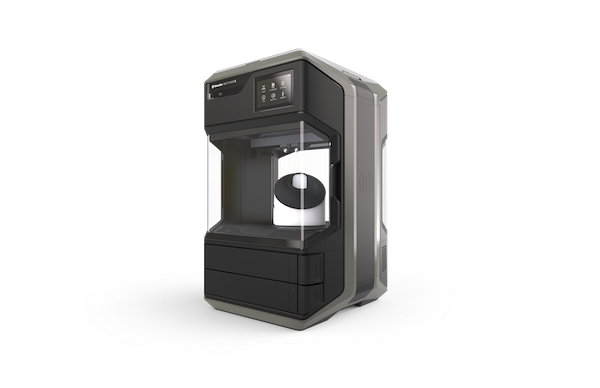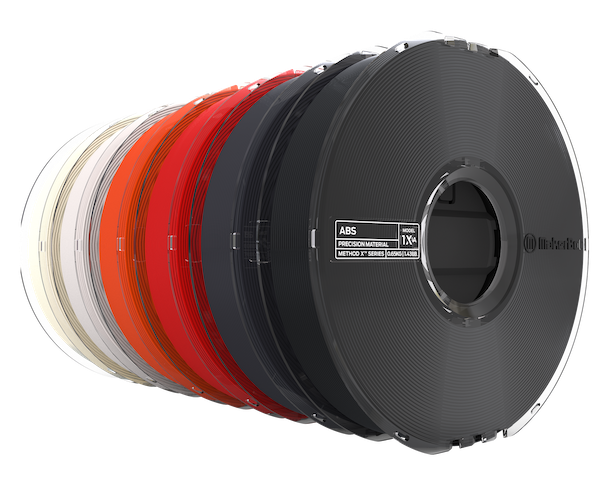METHOD X Brings Real ABS 3D Printing to the Desktop
The new desktop printer supports real ABS, a 100°C build chamber, and Stratasys soluable supports to deliver dimensional accuracy and precision.

The METHOD X delivers a level of dimensional accuracy, precision, and reliability that Makerbot claims rivals industrial 3D printers. Image Courtesy of Makerbot
Latest News
August 5, 2019
Makerbot is building on its vision for industrial-grade desktop 3D printing with the METHOD X, what it dubs a manufacturing workstation architected for the production of end-use parts, manufacturing tools, and functional prototypes.
The new desktop 3D printer’s ability to print in real ABS material in a 100°C build chamber using Stratasys SR-30 soluable supports allows dimensional accuracy and precision typically associated with higher-grade and more expensive industrial 3D printers, Makerbot officials said. Specifically, they claim METHOD X can print parts that are up to 26% more rigid and up to 12% stronger than modified ABS formulations used on most existing desktop 3D printers. In addition, the 100°C Circulating Heated Chamber significantly reduces part deformation, producing parts that are less susceptible to warping or cracking and that sport an optimal surface finish, they added.
“The combination brings manufacturing closer to the desktop and engineering,” says Nadav Goshen, Makerbot CEO. “The ability to print with Real ABS enables dimensional accuracy, and the soluable supports frees you to print whatever geometry you like.”
Makerbot is positioning the METHOD X for manufacturing use cases, including small production runs of end use parts, for manufacturing tools like jigs and fixtures, and for instances that require a strong material like ABS to withstand harsh environments. The printer is also a good fit for creating functional prototypes in ABS that closely mimic injection-molded parts prior to part production, officials say.
In comparison, the original Method printer, which is now being offered at a reduced price of $4,999, is being aimed at early stage prototyping for design engineers looking to expand the iterative process and who don’t require the mechanical properties of ABS for their applications. Goshen said he foresees engineering departments using the Method for early stage design and employing the METHOD X for production-class printing.

The METHOD X prints real ABS material that is stronger than modified ABS formulations on traditional desktop 3D printers. Image Courtesy of Makerbot
METHOD X’s support for Stratasys SR-30 soluable support material is also a key differentiator for the new printer. Goshen says the printer is the only offering in its price class to support SR-30 materials, which ensure easy and fast removal and thus enable greater design freedom, including the ability to print unrestricted geometries such as large overhangs, cavities, and shelled parts.
Other industrial capabilities on the METHOD X include Dry Sealed Material Bays, Dual Performance Extruders, Ultra-Rigid Metal Frame, and automation capabilities that create a controlled printing environment for faster and more efficient production. The METHOD X, priced at $6,499 and slated to ship in late August, is also equipped with 21 onboard sensors to monitor and control temperature, humidity, material detection, among other environmental factors.
“This combination doesn’t exist in the desktop 3D printer market today,” Goshen says. “It’s what engineers are used to when printing on industrial systems that cost three or more times as much as METHOD X.”
To learn more about the METHOD X, watch this video clip.
More MakerBot Coverage
Subscribe to our FREE magazine, FREE email newsletters or both!
Latest News
About the Author
Beth Stackpole is a contributing editor to Digital Engineering. Send e-mail about this article to [email protected].
Follow DE





